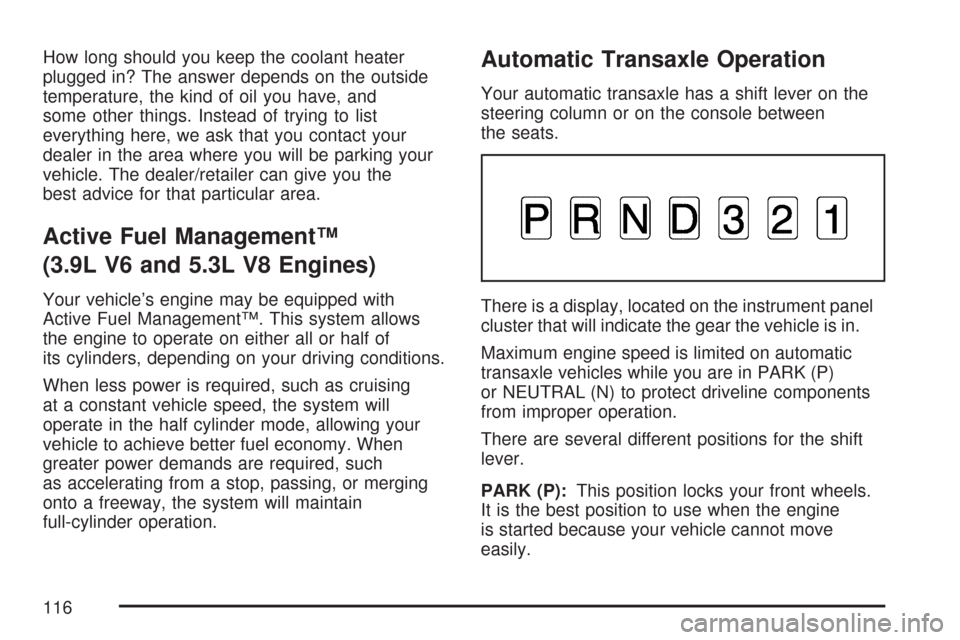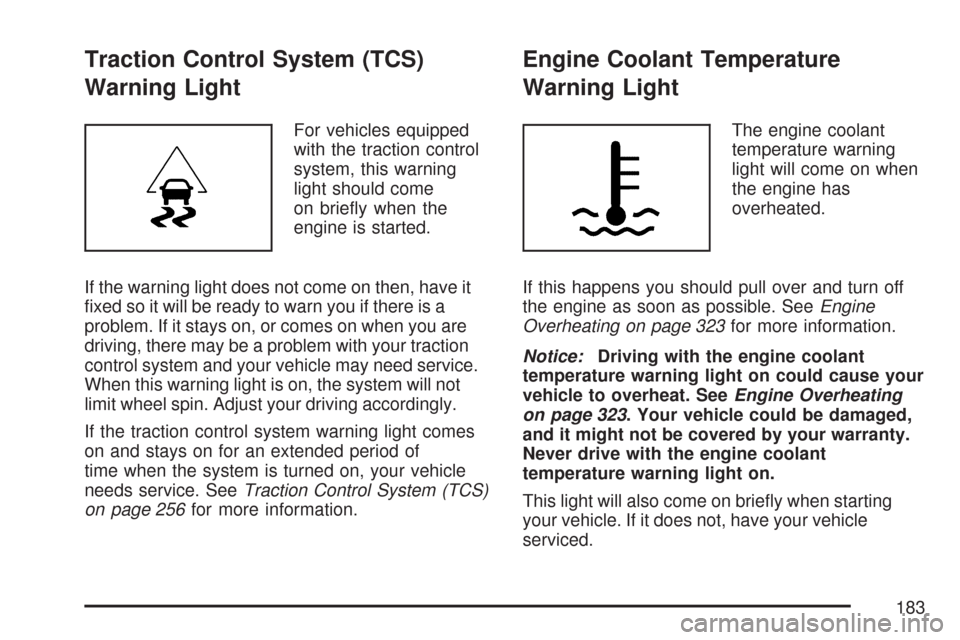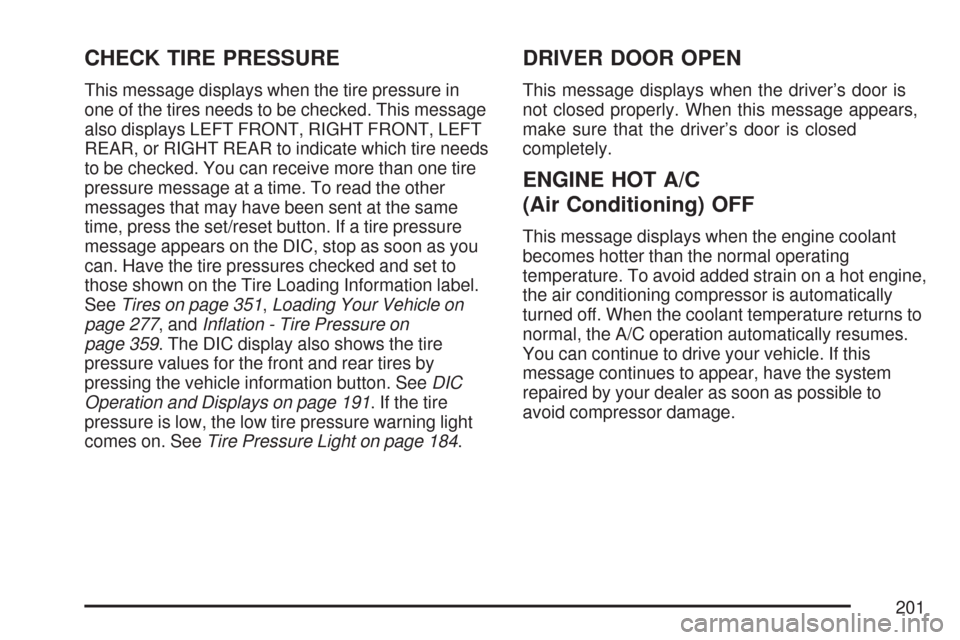2007 CHEVROLET IMPALA engine coolant
[x] Cancel search: engine coolantPage 87 of 460

Keys.............................................................. 89
Remote Keyless Entry (RKE) System.......... 90
Remote Keyless Entry (RKE)
System Operation.................................... 91
Doors and Locks.......................................... 98
Door Locks................................................. 98
Power Door Locks....................................... 99
Automatic Door Lock................................. 100
Programmable Automatic Door Unlock....... 100
Rear Door Security Locks......................... 100
Lockout Protection..................................... 101
Trunk........................................................ 102
Windows...................................................... 104
Power Windows........................................ 105
Sun Visors................................................ 107
Theft-Deterrent Systems............................. 107
Content Theft-Deterrent............................. 107
PASS-Key
®III+......................................... 108
PASS-Key®III+ Operation......................... 109Starting and Operating Your Vehicle......... 111
New Vehicle Break-In................................ 111
Ignition Positions....................................... 112
Retained Accessory Power (RAP)............. 113
Starting the Engine.................................... 113
Engine Coolant Heater.............................. 115
Active Fuel Management™
(3.9L V6 and 5.3L V8 Engines).............. 116
Automatic Transaxle Operation.................. 116
Parking Brake........................................... 120
Shifting Into Park (P)................................. 121
Shifting Out of Park (P)............................. 123
Parking Over Things That Burn................. 123
Engine Exhaust......................................... 124
Running the Engine While Parked............. 125
Mirrors......................................................... 126
Manual Rearview Mirror............................. 126
Manual Rearview Mirror with OnStar
®....... 126
Automatic Dimming Rearview Mirror
with OnStar
®.......................................... 126
Outside Power Mirrors............................... 127
Outside Convex Mirror............................... 127
Section 2 Features and Controls
87
Page 97 of 460

The remote vehicle start feature provides two
separate starts, each with 10 minutes of engine
running, or it provides one start with 10 minutes of
engine running that may be extended with 10 more
minutes. If you press and release the transmitter
lock button and then press and hold the remote
start button, on the remote keyless entry
transmitter, again before the �rst 10 minutes of
engine running time has expired, 10 minutes are
added to the remaining minutes. For example, if the
lock button and then the remote start buttons are
pressed again after �ve minutes of the engine
run time, 10 minutes are added and you now have
15 minutes of engine running. The added
ten minutes are considered a second remote
vehicle start. Once two remote starts or a single
start with a time extension have been provided, the
vehicle must be started normally with the ignition
key to get more remote vehicle starts.
The remote vehicle start feature will not operate if
the key is in the ignition, the hood is not closed
or if there is an emission control system
malfunction.Also, the engine will turn off during a remote
vehicle start if the coolant temperature gets too
high or if the oil pressure gets low.
Vehicles equipped with the remote vehicle start
feature are shipped from the factory with the
remote vehicle start system enabled. The system
may be enabled or disabled through the DIC.
See “REMOTE START” underDIC Vehicle
Customization on page 208for additional
information.
Remote Start Ready
If your vehicle does not have the remote vehicle
start feature, it may have the remote start ready
feature. This feature allows your dealer to add the
manufacturer’s remote vehicle start feature.
If your vehicle has the remote start ready feature,
your remote keyless entry transmitter will have
extended range that will allow you to lock or unlock
your vehicle from about 195 feet (60 m) away.
See your dealer if you would like to add the
manufacturer’s remote vehicle start feature to
your vehicle.
97
Page 115 of 460

Notice:Your engine is designed to work with
the electronics in your vehicle. If you add
electrical parts or accessories, you could
change the way the engine operates. Before
adding electrical equipment, check with your
dealer. If you do not, your engine might not
perform properly. Any resulting damage would
not be covered by your vehicle’s warranty.
Engine Coolant Heater
Your vehicle may have this feature. In very cold
weather, 0°F (−18°C) or colder, the engine coolant
heater can help. You will get easier starting and
better fuel economy during engine warm-up.
Usually, the coolant heater should be plugged in a
minimum of four hours prior to starting your vehicle.
At temperatures above 32°F (0°C), use of the
coolant heater is not required.
To Use the Engine Coolant Heater
1. Turn off the engine.
2. Open the hood and unwrap the electrical
cord. The cord is attached to the underside
of the diagonal brace, which is located above
the engine air cleaner/�lter assembly.3. Plug it into a normal, grounded 110-volt AC
outlet.
{CAUTION:
Plugging the cord into an ungrounded
outlet could cause an electrical shock.
Also, the wrong kind of extension cord
could overheat and cause a �re. You
could be seriously injured. Plug the cord
into a properly grounded three-prong
110-volt AC outlet. If the cord will not
reach, use a heavy-duty three-prong
extension cord rated for at least 15 amps.
4. Before starting the engine, be sure to unplug
and store the cord as it was before to keep it
away from moving engine parts. If you do
not, it could be damaged.
115
Page 116 of 460

How long should you keep the coolant heater
plugged in? The answer depends on the outside
temperature, the kind of oil you have, and
some other things. Instead of trying to list
everything here, we ask that you contact your
dealer in the area where you will be parking your
vehicle. The dealer/retailer can give you the
best advice for that particular area.
Active Fuel Management™
(3.9L V6 and 5.3L V8 Engines)
Your vehicle’s engine may be equipped with
Active Fuel Management™. This system allows
the engine to operate on either all or half of
its cylinders, depending on your driving conditions.
When less power is required, such as cruising
at a constant vehicle speed, the system will
operate in the half cylinder mode, allowing your
vehicle to achieve better fuel economy. When
greater power demands are required, such
as accelerating from a stop, passing, or merging
onto a freeway, the system will maintain
full-cylinder operation.
Automatic Transaxle Operation
Your automatic transaxle has a shift lever on the
steering column or on the console between
the seats.
There is a display, located on the instrument panel
cluster that will indicate the gear the vehicle is in.
Maximum engine speed is limited on automatic
transaxle vehicles while you are in PARK (P)
or NEUTRAL (N) to protect driveline components
from improper operation.
There are several different positions for the shift
lever.
PARK (P):This position locks your front wheels.
It is the best position to use when the engine
is started because your vehicle cannot move
easily.
116
Page 147 of 460

Instrument Panel Overview........................ 150
Hazard Warning Flashers.......................... 152
Other Warning Devices............................. 152
Horn.......................................................... 152
Tilt Wheel.................................................. 153
Turn Signal/Multifunction Lever.................. 153
Turn and Lane-Change Signals................. 154
Headlamp High/Low-Beam Changer.......... 155
Flash-to-Pass............................................ 155
Windshield Wipers..................................... 155
Windshield Washer.................................... 156
Cruise Control........................................... 157
Exterior Lamps.......................................... 160
Delayed Headlamps.................................. 162
Daytime Running Lamps (DRL)/
Automatic Headlamp System.................. 162
Fog Lamps................................................ 163
Instrument Panel Brightness...................... 163
Courtesy Lamps........................................ 163
Dome Lamp.............................................. 164
Entry Lighting............................................ 164
Delayed Entry Lighting.............................. 164
Delayed Exit Lighting................................. 165
Parade Dimming........................................ 165
Reading Lamps......................................... 165Electric Power Management...................... 165
Battery Run-Down Protection..................... 166
Accessory Power Outlet(s)........................ 167
Ashtray(s) and Cigarette Lighter................ 168
Climate Controls......................................... 168
Climate Control System............................. 168
Outlet Adjustment...................................... 172
Passenger Compartment Air Filter............. 173
Warning Lights, Gages, and Indicators..... 174
Instrument Panel Cluster........................... 175
Speedometer and Odometer...................... 176
Tachometer............................................... 176
Safety Belt Reminder Light........................ 177
Passenger Safety Belt Reminder Light....... 177
Airbag Readiness Light............................. 178
Passenger Airbag Status Indicator............. 179
Charging System Light.............................. 181
Brake System Warning Light..................... 181
Anti-Lock Brake System Warning Light...... 182
Traction Control System (TCS)
Warning Light........................................ 183
Engine Coolant Temperature
Warning Light........................................ 183
Engine Coolant Temperature Gage............ 184
Section 3 Instrument Panel
147
Page 183 of 460

Traction Control System (TCS)
Warning Light
For vehicles equipped
with the traction control
system, this warning
light should come
on brie�y when the
engine is started.
If the warning light does not come on then, have it
�xed so it will be ready to warn you if there is a
problem. If it stays on, or comes on when you are
driving, there may be a problem with your traction
control system and your vehicle may need service.
When this warning light is on, the system will not
limit wheel spin. Adjust your driving accordingly.
If the traction control system warning light comes
on and stays on for an extended period of
time when the system is turned on, your vehicle
needs service. SeeTraction Control System (TCS)
on page 256for more information.
Engine Coolant Temperature
Warning Light
The engine coolant
temperature warning
light will come on when
the engine has
overheated.
If this happens you should pull over and turn off
the engine as soon as possible. SeeEngine
Overheating on page 323for more information.
Notice:Driving with the engine coolant
temperature warning light on could cause your
vehicle to overheat. SeeEngine Overheating
on page 323. Your vehicle could be damaged,
and it might not be covered by your warranty.
Never drive with the engine coolant
temperature warning light on.
This light will also come on brie�y when starting
your vehicle. If it does not, have your vehicle
serviced.
183
Page 184 of 460

Engine Coolant Temperature Gage
This gage shows the engine coolant temperature.
If the gage pointer moves towards the “H”
(United States) or the shaded in thermostat
(Canada), it means that your engine coolant has
overheated. If you have been operating your
vehicle under normal driving conditions, you should
pull off the road, stop your vehicle and turn off
the engine as soon as possible.
SeeEngine Overheating on page 323for more
information.
Tire Pressure Light
This light comes on
brie�y when you turn
the ignition to RUN.
This light will also come on when one or more of
your tires are signi�cantly underin�ated.
A CHECK TIRE PRESSURE message in the
Driver Information Center (DIC) will accompany
the light. SeeDIC Warnings and Messages
on page 199for more information.
Stop and check your tires as soon as it is safe to
do so. If underin�ated, in�ate to the proper
pressure. SeeTires on page 351for more
information.
United StatesCanada
184
Page 201 of 460

CHECK TIRE PRESSURE
This message displays when the tire pressure in
one of the tires needs to be checked. This message
also displays LEFT FRONT, RIGHT FRONT, LEFT
REAR, or RIGHT REAR to indicate which tire needs
to be checked. You can receive more than one tire
pressure message at a time. To read the other
messages that may have been sent at the same
time, press the set/reset button. If a tire pressure
message appears on the DIC, stop as soon as you
can. Have the tire pressures checked and set to
those shown on the Tire Loading Information label.
SeeTires on page 351,Loading Your Vehicle on
page 277, andIn�ation - Tire Pressure on
page 359. The DIC display also shows the tire
pressure values for the front and rear tires by
pressing the vehicle information button. SeeDIC
Operation and Displays on page 191. If the tire
pressure is low, the low tire pressure warning light
comes on. SeeTire Pressure Light on page 184.
DRIVER DOOR OPEN
This message displays when the driver’s door is
not closed properly. When this message appears,
make sure that the driver’s door is closed
completely.
ENGINE HOT A/C
(Air Conditioning) OFF
This message displays when the engine coolant
becomes hotter than the normal operating
temperature. To avoid added strain on a hot engine,
the air conditioning compressor is automatically
turned off. When the coolant temperature returns to
normal, the A/C operation automatically resumes.
You can continue to drive your vehicle. If this
message continues to appear, have the system
repaired by your dealer as soon as possible to
avoid compressor damage.
201